Review for Ristorante Paradiso: Complete Series
Introduction
I can’t figure out the anime market. I thought I had it sussed out when Crunchyroll and similar streaming services appeared. The big boom of the mid 2000s had come to an end. That period when there was silly money thrown at the industry and every mainstream licence around was being snapped up for DVD release, just couldn’t be sustained, and several companies went to the wall as a result. Into that vacuum entered the streaming services. Only the sure things would get home video releases now, and everything else would be licensed for streaming. You’d get to see all the little shows, the odd gems online, and after a while they’d disappear, never to be seen again. Only the odd breakout might make it to home video, but otherwise our DVD and Blu-ray consumption would dwindle to the old standards of shonen action shows and blatant fan service comedies.
The reverse has happened. At this point in time, it looks as if it is only the rare show that gets streamed and doesn’t get picked up for home video release. Companies like Sentai Filmworks are now announcing their licenses at the same time as the streaming licenses get announced, indicating that they aren’t waiting for the sure thing or breakout gems, but are just as speculative as they were during the boom. Take Ristorante Paradiso for instance. It was one of a triplet of shows that I caught on Crunchyroll a couple of years ago along with Aoi Hana and Hyakko. For two of the three at least, even though I loved the shows, I was certain that they were far too niche to ever gather an audience willing to invest in optical media. I watched them on Crunchyroll, enjoyed them, and lamented when their licenses expired. I was certain that I would never see them again.
Then last year, Right Stuf announced a budget label called Lucky Penny, a label for which they would acquire those titles that might not make their money back with deluxe packaging, but would work in the US as vanilla releases. Guess what their first three licenses were... While there may just be enough of an audience in the US to justify their release, I’m wary of them ever coming to the UK, to an anime audience bought up on mainstream action shows and fan service. Of the current UK anime demographic, Ristorante Paradiso might find one, maybe two hundred fans that might have caught it on Crunchyroll and liked it enough to buy it. That would be a shame as Ristorante Paradiso is a show that would have a lot greater appeal outside the UK anime fanbase, as it’s not your usual anime show. Anyway, I went ahead and imported, and read on for why you should consider doing the same.
Nicoletta is a girl who’s leaving her country home and heading for the big city of Rome with one thing in mind, getting even with her mother Olga, for divorcing her father, and then leaving her to be raised by her grandparents. The reason was that she wanted to get remarried, and Lorenzo was a man who didn’t want to be involved with a single mother. Lorenzo apparently adored Olga enough to open a restaurant for her, and Nicoletta plans to walk in and blow the secret right open. But when she gets to the Casetta dell’Orso, she finds a restaurant created for her mother’s somewhat specialised fetish. It’s staffed solely by elegant older men that wear glasses. When she sets eyes on the head waiter Claudio, it seems that she shares that fetish too, as she’s instantly smitten. Olga convinces her to keep the secret a little longer, and gets her an apartment in the city, and Nicoletta even starts work at the restaurant as a trainee chef. The more time that she spends working in the restaurant and learning about the people that work there, the more that her anger at her mother ebbs.
Ristorante Paradiso is based on the manga of the same name, and the spin-off manga series Gente: The People of Ristorante Paradiso, both by Natsume Ono. 11 episodes of the anime series are presented here across three discs by Lucky Penny.
Disc 1
1. Nicoletta
2. The Ring
3. Paradiso
4. Casetta dell’Orso
Disc 2
5. The Flavor of Orsini
6. Husband and Wife
7. A Special Day
8. Days of Yore
Disc 3
9. A Day Off at the Ristorante
10. Secret Love
11. The People of the Ristorante
Picture
Ristorante Paradiso is released on three NTSC discs at the 1.78:1 anamorphic ratio. Thankfully, it’s one of the rare anime titles that gets a progressive transfer, and is best appreciated played back on compatible equipment, at an eye-pleasing 24 frames per second with smooth animation, free of interlacing artefacts. If you’re watching on a CRT TV, there is a hint of interlacing, and a bit of judder to deal with, but it still looks much better than most anime DVDs from the US. The image is clear and sharp throughout, free of compression, and with bold well-defined lines and colours.
I’d like to say that in terms of visuals, Ristorante Paradiso is a unique title, but that would be a lie. Unfortunately there’s no such word as bi-nique. Natsume Ono’s House of the Five Leaves was also adapted into an anime, another show that doesn’t fit the usual well-defined boxes of anime genres, and Ristorante Paradiso shares a character design ethic with that show. The character have wide mouths, thin lips, are more angular than conventional character designs, and have heavy lidded, and more realistic eyes when it comes to facial proportions. Also, the background design in Ristorante Paradiso is very attractive, inserting its characters into stylised representations of Rome, with interiors that more resemble oil paintings and artwork than anything else. It’s very atmospheric and moody, and perfectly suited to the subject matter. The CGI used for the wine doesn’t look too great though.
Sound
As with the majority of these niche titles released in the US these days, they are made possible by dispensing with the English dubs. Ristorante Paradiso gets a DD 2.0 Stereo Japanese track with optional English subtitles (if you use your remote to switch them on and off directly). I’m not sure how a US dub would have handled localisation for a show like this, as faux Italian accents would have sounded cheesy, while emulating the Japanese approach would have been odd. The Japanese version expresses its adoration for all thing Italian by inserting Italian words in the Japanese dialogue, and stock Italian phrases are used for simple things like greetings and farewells, please and thank you, but the majority of the dialogue is in Japanese. The subtitles translate the Japanese dialogue, but keep the Italian as is. It takes a little getting used to, but pretty soon becomes transparent. I did notice a fault in the ADR, a repeated word in episode 6, but that’s a problem with the source, not with Lucky Penny’s authoring.
The music for Ristorante Paradiso really works with the Italian setting and atmosphere, and enhances the story well, although a concert performance in episode 10 comes across a little too synthetic as opposed to genuinely orchestral. The show also gets a couple of very enjoyable theme songs.
Extras
Three discs are presented in a simple black Amaray style lite-box, with one disc on one face, and two overlapping on the other. The case gets a single-sided sleeve depicting the show’s artwork and disc blurb. That jibes with the budget label aspect of the release, but the disc art is really quite special, while Lucky Penny doesn’t scrimp with the on disc extras.
While the episodes are presented in their Japanese broadcast form, each disc ends with an English language translated credit reel.
Disc 1 has the textless opening, a 90 second Rome Scenery Gallery with appropriate clips from the show, 7 pages of text and art as a guide to Rome, and Liner Notes that translate the Italian dialogue used in the show as well as a glossary looking into Italian meals.
Disc 2 has the textless ending (only the main one), and a 4-minute slideshow Backgrounds Gallery.
Disc 3 has the US trailer, two Japanese TV ads, and two Ristorante Paradiso NOISE trailers.
Across all three discs, you’ll find trailers for other Right Stuf titles, such as Antique Bakery, Aria: The Animation, Emma, a Victorian Romance Season 1, Sound of the Sky, Boys Be..., Maria Watches Over Us Season 1, His and Her Circumstances, Shingu: Secret of the Stellar Wars, and Utena, Revolutionary Girl: Student Council Saga.
Conclusion
Ristorante Paradiso is a show for grown-ups, and by grown-ups I don’t mean animated sex, violence and swearing. In this case I mean that if I had happened across this series when I was a teenager, as that is where most of the eighteen rated anime in this country is aimed, I would have switched it off as ‘naff and boring’. Now that I have a few more years under my belt, I can appreciate this show a lot more, as it’s really aimed at my age demographic. Ristorante Paradiso is an anime about food, fashion, and feelings. It’s about relationships, and not relationships in the usual anime sense of teen boys gathering harems, and young girls slotted into well-defined stereotypes, these are relationships that are much more conventional and reflective of reality. There aren’t too many shows like this released at all, and even fewer make it to the UK. The last such was also adapted from another Natsume Ono manga, House of Five Leaves, and Beez, who released it went out of business last year. There are precious few distributors now in the UK that would take a chance on a show like this, which is a crying shame. Ristorante Paradiso is the sort of show that ought to be on BBC4 late at night, appealing to the same crowd who enjoy Scandinavian police procedural dramas.
A couple of aspects to the show that might make it appeal to a younger, particularly female audience, include obviously the character of Nicoletta, the young girl in the big city for the first time, looking to get even with her mother for abandoning her. The crush that she develops on head waiter Claudio could initially look like one of the character pairings from a more conventional anime, but it quickly develops beyond that into something more realistic. The second thing is that most anime need to have a hook, a fetishistic aspect that make them appeal to specific audiences, whether it’s giant robots, cute girls that go ‘Uguu’ or mascot animals that grant wishes. Here it literally is a fetish, one that appeals to Nicoletta’s mother Olga in particular, and by proxy professional working women who may be coming home from a hard day at the office and looking to curl up in front of the TV and partake of a glass of wine with a warm anime. Here it is older, dignified, elegant gentlemen who wear glasses. It’s a fetish that particularly appeals to Olga and the restaurant’s female clientele, and it turns out that Nicoletta has inherited some of her mother’s proclivities, at least when it comes to Claudio in particular.
Ristorante Paradiso’s story is pretty straightforward and short for that matter, adapted as it is from just one volume of manga. Stretching Nicoletta’s story, her fraught reunion with her mother and eventual reconciliation, as well as the attraction she has for Claudio, across 11 episodes would be asking a lot. Fortunately there are the Gente spin off manga, which tell the back stories of the various characters working at the restaurant, and these stories are interwoven in to the show’s narrative. These also have the advantageous effect of giving Nicoletta’s story time to breathe, and the whole show is substantially enriched as a result. So as well as Nicoletta, Olga and Claudio, we have the restaurant owner and Olga’s husband Lorenzo. Working the floor in the restaurant beside Claudio are Luciano and Vito. The sommelier is Gigi, and in the kitchen are Teo and Furio, and pretty soon Nicoletta as well.
All of these characters have their stories to tell, their own relationships to deal with. Claudio is divorced from Olga’s best friend Gabriella, and while she has moved on, Claudio has yet to take off his wedding ring. Luciano is a grandfather who dotes on his grandson Francisco, and still dotes on his dead wife. Gigi’s relationship with Lorenzo is complex and tragic, and a major reason why Lorenzo didn’t want to marry a woman with baggage from a previous relationship. Teo has a fiery relationship with the former head chef of the restaurant, Vito is an older man married to a woman of Nicoletta’s age, and Furio was there at a key moment in Claudio’s life when he was on the crossroads of deciding his future career.
These stories and more are explored in the show, as the history of the restaurant and those who work there is revealed, while the present day narrative plays out like a gentle slice-of-life anime, with much of it devoted to Nicoletta’s training in the restaurant. Various interesting people come to dine at the restaurant, some with history there, some with problems of their own. A couple whose marriage is in trouble get some unconventional counselling from the restaurant staff, Luciano’s grandson gets a very special birthday party, Nicoletta tries coming up with a dish for the new season menu, it’s all light, inconsequential but very entertaining.
What intrigues me is the passion for Italy and its culture that comes across in the anime. It’s the same sort of passion and attention to detail that you’ll find in shows like Gunslinger Girl. It’s a very evocative and atmospheric depiction of a foreign culture, very recognisable as Italy, but with just enough of a Japanese twist to mark it out as unusual. Certainly having Italian characters speak Japanese, with the occasional word of Italian thrown in is an unexpected way of doing things, and once in a while a character will behave in a way that is very specifically Japanese in culture, but by and large they really do capture a romance and vivacity that reflects the story they tell. It’s in the visuals, with the settings and locations having the feel of artwork at times. It’s also in the music of the show which again evokes Europe and Italy in a very appropriate way.
Also being a show about a restaurant, the love affair with food really does come across on screen. 2D animation does have its limits, and anime in particular is a stylised and impressionistic medium at the best of times. This may be the only time that animated food will make your mouth water. Then of course there is the fashion. This is Italy after all, and a fair bit of the animators’ time is set to dressing the characters, making them look good on the screen.
Ristorante Paradiso is a show unlike any other anime I have seen. It could easily have been live action, and I wouldn’t be surprised if one day it makes it to film. It’s a romantic slice of life that is more about conveying a mood, evoking atmosphere, and vicariously partaking of another culture. Its narrative is hardly as important as the feelings it engenders in its audience, and it is as wholly rich, indulgent and decadent an experience as the dishes that are served up in the restaurant. Ristorante Paradiso isn’t a show that you want to watch, so much as it is a show in whose company you wish to bask.
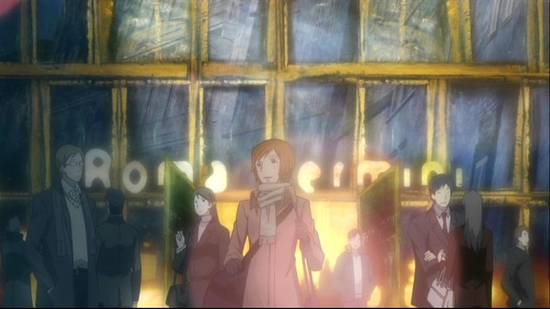
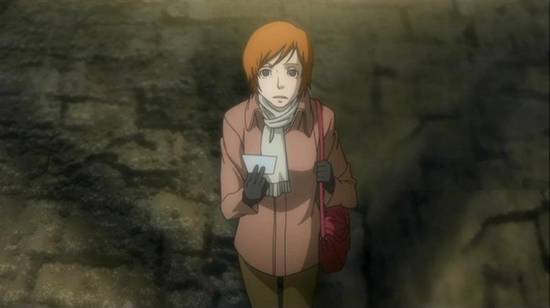

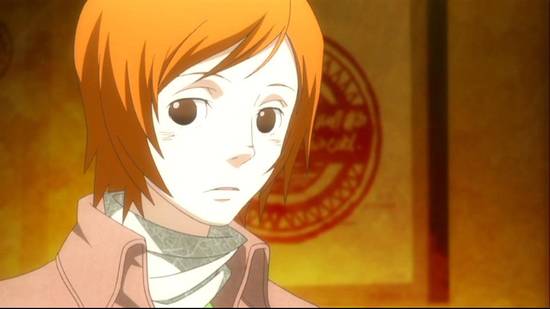
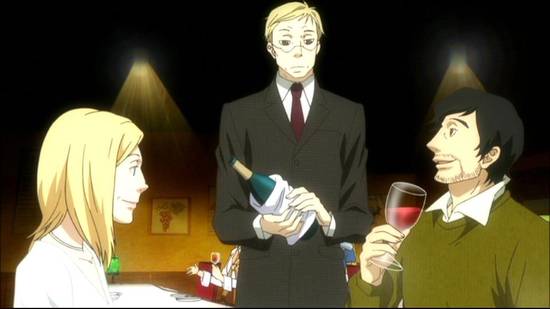
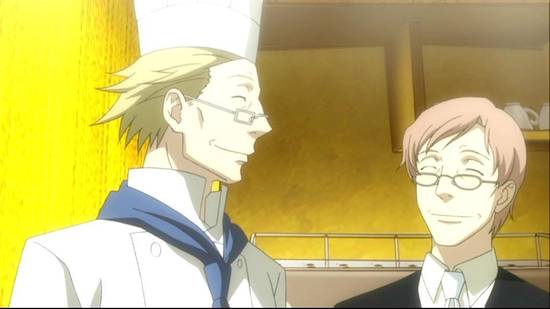

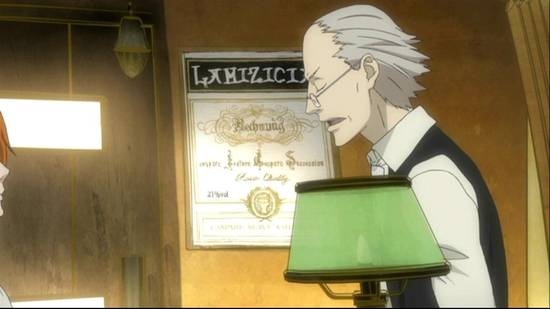
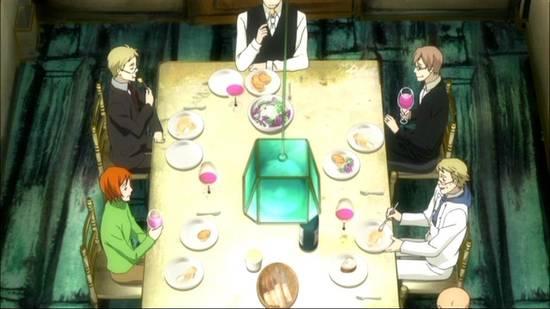
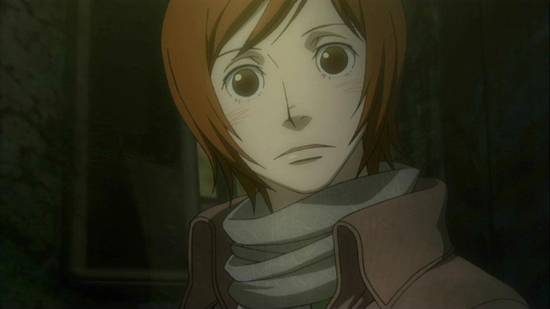
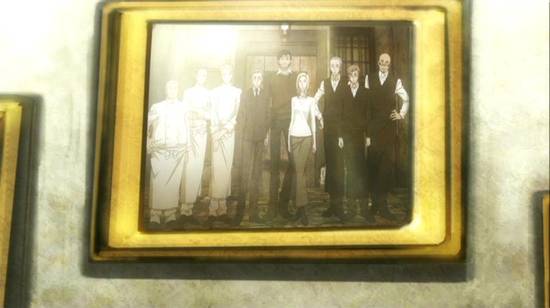
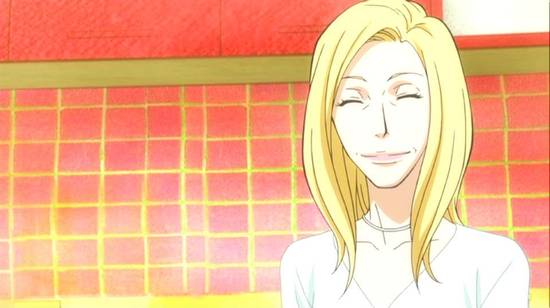


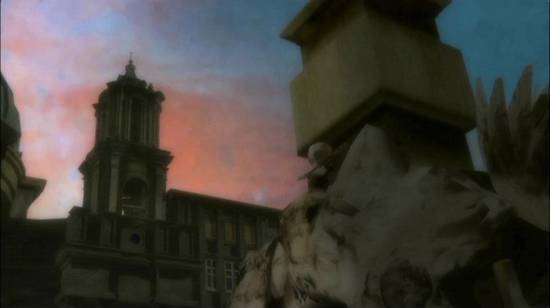
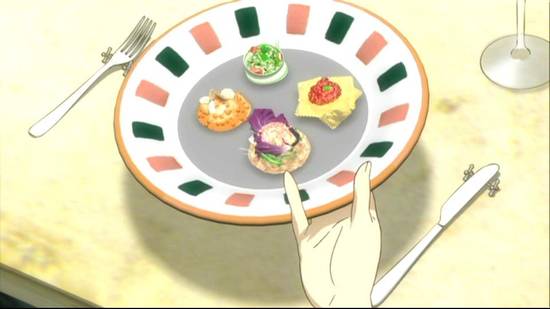
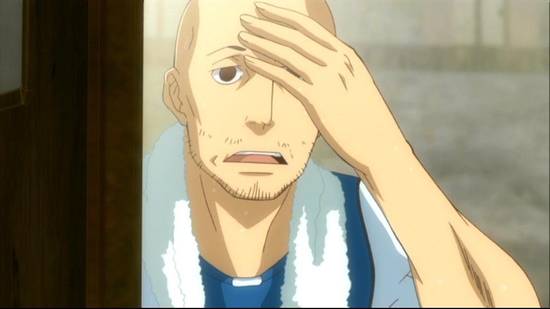
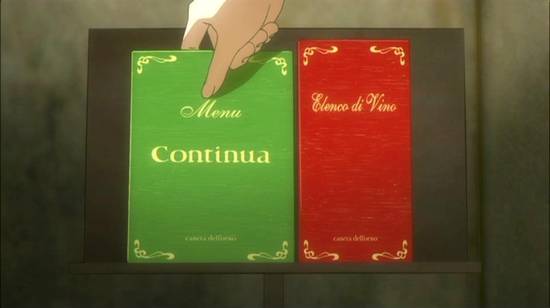
Your Opinions and Comments
Be the first to post a comment!